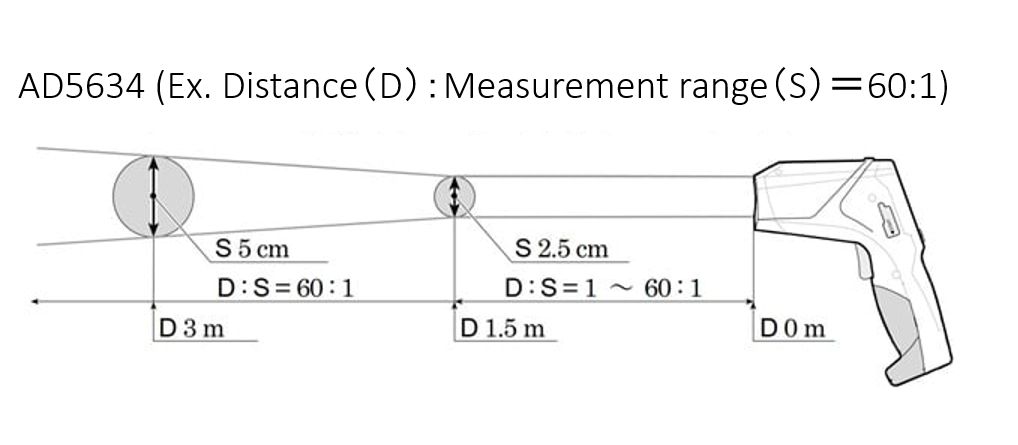
The ratio between the distance to the measurement target (D: Distance)
and the diameter of the measurement area (S: Spot size) in an infrared thermometer is referred to as the D:S ratio.
As the distance to the measurement target increases, the measurement range of an infrared thermometer becomes larger.

Each product has a specific D:S ratio, and for example, in a radiometer with a D:S ratio of 60:1,
the measurement range is as follows:
When the distance is 1.5 meters, the measurement range forms a circular area with a diameter of 2.5 centimeters.
When the distance is 3 meters, the measurement range forms a circular area with a diameter of 5 centimeters.
If the distance to the object is doubled, the measurement range will also double.
However, even when measuring at distances shorter than 1.5 meters,
the measurement range remains at a minimum of 2.5 centimeters.
The measurement range will never be smaller than the minimum measurement range.
(Reference: The limitation of the minimum measurement range (size) of an infrared thermometer )

When the measurement target is smaller than the measurement range,
accurate temperature measurement cannot be achieved.
This is because it results in measuring including the surrounding area
of the measurement target, thereby affecting the accuracy of
temperature measurement.
Therefore, it is necessary to perform temperature measurements using an infrared thermometer
with a measurement range smaller than the size of the measurement target.
As the D:S ratio increases, the measurement range becomes smaller even at long distances,
making long-distance measurements easier.
At A&D, we offer products with D:S ratios ranging from 1:1 to 100:1.